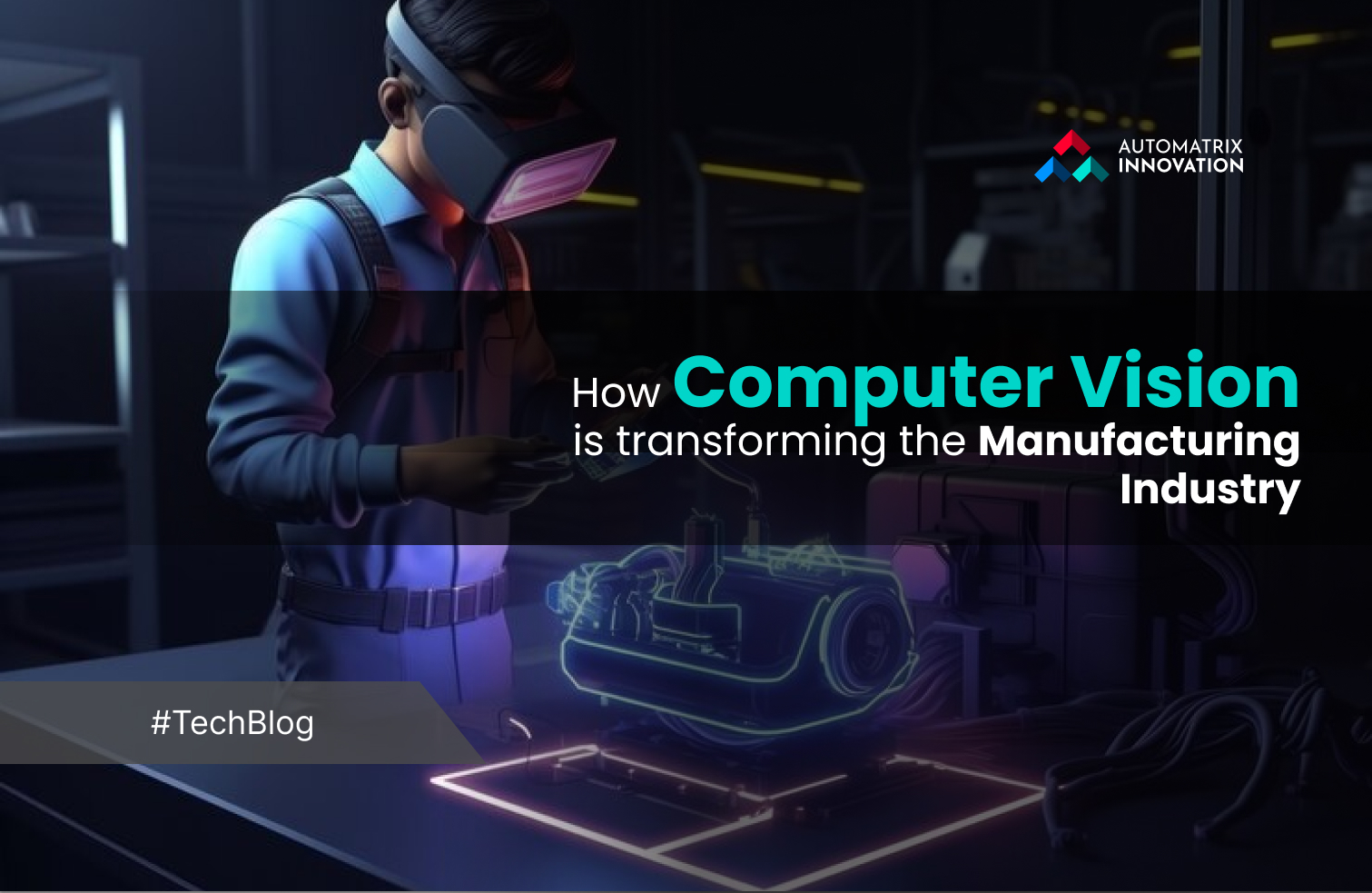Camera VisionHow Computer Vision is transforming the Manufacturing Industry
04 March 2025

In today’s fast-paced world, technology is transforming industries at an unprecedented rate. One of the most exciting advancements is the use of computer vision in manufacturing. But what exactly is computer vision, and how is it changing the way products are made?
Let’s break it down in simple terms.
What is Computer Vision?
Computer vision is a branch of artificial intelligence (AI) in Manufacturing that enables machines to "see" and interpret visual information from the world around them. Just like humans use their eyes and brain to understand their surroundings, machine vision uses smart vision cameras, sensors, and algorithms to analyze images and videos. This Camera vision technology can detect objects, recognize patterns, and even make decisions based on what it "sees."
How is Computer Vision Used in Manufacturing?
Manufacturing is all about precision, efficiency, and quality. AI-powered robotics and Computer vision is helping manufacturers achieve these goals in ways that were once unimaginable. Here are some key applications:
1. Quality Control and Defect Detection
One of the most important uses of computer vision in manufacturing is ensuring product quality. Traditionally, quality control was done manually by human inspectors, which could be time-consuming and prone to errors. With computer vision, cameras can scan products on the assembly line and instantly detect defects like cracks, scratches, or misalignments. This not only speeds up the process but also ensures that only flawless products reach customers.
2. Automated Assembly Lines
Robots have been a part of manufacturing for decades, but with computer vision, they’ve become even smarter. Vision-enabled robots can "see" and identify parts, pick them up, and assemble them with incredible accuracy. This is especially useful in smart manufacturing, where precision is critical. For example, a robot with computer vision can place a tiny screw in the exact right spot without human intervention.
3. Inventory Management
Keeping track of inventory can be a headache for manufacturers. Computer vision simplifies this process by using cameras to monitor stock levels in real-time. It can identify when supplies are running low and even predict when new materials will be needed. This helps manufacturers avoid delays and keep production running smoothly.
4. Worker Safety
Safety is a top priority in any manufacturing facility. Computer vision can monitor the workplace and detect potential hazards, such as workers not wearing protective gear or machinery operating unsafely. It can also alert supervisors in real-time, helping prevent accidents before they happen.
5. Predictive Maintenance
Machines in a factory need regular maintenance to keep them running efficiently. Computer vision can monitor equipment and detect signs of wear and tear, such as unusual vibrations or overheating. By identifying these issues early, manufacturers can schedule maintenance before a breakdown occurs, saving time and money.
Benefits of Computer Vision in Manufacturing
The adoption of computer vision in manufacturing brings numerous benefits:
- Automated processes powered by computer vision are faster and more accurate than manual methods.
- By reducing errors and minimizing downtime, manufacturers can save money.
- Defects are caught early, ensuring that only high-quality products are shipped.
- Real-time monitoring helps create a safer work environment.
- Computer vision systems can easily be scaled to handle larger production volumes.
Challenges and Considerations
While computer vision offers many advantages, there are some challenges to consider:
- Setting up computer vision systems can be expensive, especially for small manufacturers.
- Cameras and sensors collect a lot of data, which raises concerns about privacy and security.
- Implementing and maintaining computer vision systems requires skilled professionals.
- Integrating computer vision with existing systems can be complex.
Despite these challenges, the benefits far outweigh the drawbacks, and as technology continues to advance, these hurdles are becoming easier to overcome.
The Future of Computer Vision in Manufacturing
The future looks bright for computer vision in manufacturing. As AI and machine learning continue to evolve, these systems will become even more powerful and versatile. We can expect to see:
- Greater Automation: More tasks will be automated, reducing the need for human intervention.
- Smarter Factories: Entire factories will be equipped with vision systems that communicate with each other, creating a seamless production process.
- Customization: Computer vision will enable manufacturers to produce customized products on a large scale, meeting the growing demand for personalized goods.
Conclusion
Computer vision is no longer a futuristic concept—it’s here, and it’s transforming the manufacturing industry. By enabling machines to "see" and make decisions, this technology is improving efficiency, quality, and safety in ways that were once unimaginable. While there are challenges to overcome, the potential benefits are enormous. As we move forward, Automatrix Innovation’s computer vision will undoubtedly play an even bigger role in shaping the future of manufacturing.
So, the next time you see a perfectly assembled product or a flawlessly painted car, remember: there’s a good chance computer vision in manufacturing played a part in making it happen!
